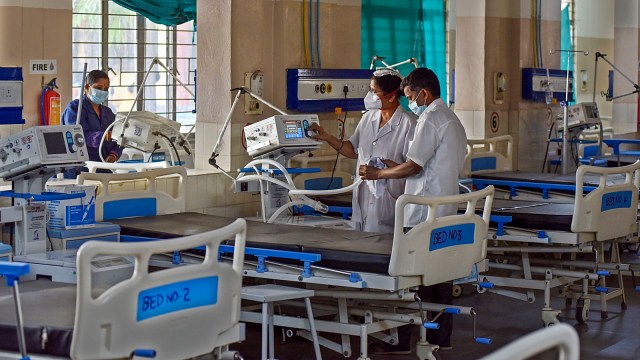With WHO classifying it as a ‘variant of interest,’ experts decode what it means and what you need to do
According to experts, the increase in cases worldwide indicates that JN.1, an Omicron sub-lineage, may be able to outcompete other variants because of its high immune escape ability. Because of this, the WHO has designated JN.1 as a “variant of interest” (VOI), different from the parent lineage BA.2.86, due to its quickly spreading nature. It is the variation that is growing the fastest in the US, according to the Centers for Disease Control (CDC). There is no need to panic, but people are wondering if the Covid-19 sub-variant, which has already been linked to 21 cases in India, is spreading quickly.
‘Increased transmission, immune escape and prolonged infectious period’
The growth advantage, according to Dr. Rajesh Karyakarte, the Maharashtra genome sequencing coordinator, is exponential. He cites WHO data demonstrating how JN.1 quickly rose from 3.3% of all coronavirus cases between October 30 and November 5 to 27% a month later. “This represents an 86 percent growth advantage,” Dr. Karyakarte claims, explaining that the longer infectious period, enhanced transmission, and immune escape were the causes.
According to the CDC, this shows that it is contagious and is becoming more adept at evading the body’s immune defense system than the ancestral strain. However, since hospital admission rates are low, the spike in transmission does not necessarily indicate a serious illness. Experts add that there is little risk of infection, so those who have already been vaccinated or have had a prior infection shouldn’t be concerned.
Faster spread due to additional mutation in the spike protein
According to genome researchers Vinod Scaria and Bani Jolly, the SARS-CoV-2 virus is constantly changing and branching out into new lineages. Every infection gives the virus the chance to develop further, and JN.1, an Omicron sub-lineage, is distinguished by the presence of an extra spike protein mutation, L455S. They claim that because of its strong immune escape characteristic, JN.1 could outcompete other variations.
According to a recent study published in the Lancet, JN.1 can elude the immune system more quickly than its parent BA.2.86 due to this one mutation alone.
Do we need to worry?
Expert in infectious diseases Dr. Ameet Dravid says that the virus will continue to mutate in order to grow more potent. As of right now, we are providing hospital treatment for minor upper respiratory tract infections. Because the variant is more immune evasive, there could be a spike in cases. It is imperative that people receive vaccinations, particularly those who are only partially immunized, according to Dr. David. As of now, no particularly notable symptoms have been reported, and the signs and symptoms include sore or scratchy throat, exhaustion, headache, body ache, congestion, coughing, and fever, similar to previous variations.
However, Dr. Dravid says that since cases are on the rise, mask use should be required in crowded areas. He continues, “It’s time to internalize basic respiratory etiquette, like covering your nose and mouth when you cough or sneeze.”




